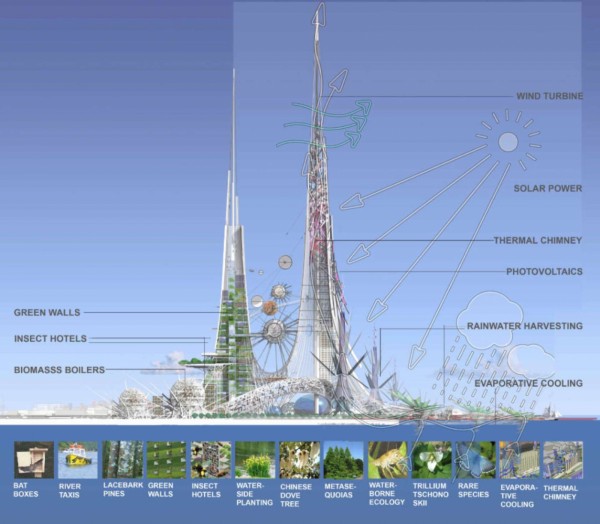Being the home of the world’s tallest building has long been a badge of honor among up-and-coming countries, but China is looking to add a new criterion to the mix: tallest and greenest. At least, that’s their plan for two towers to be built on a lake in the city of Wuhan, in central China.
The title of World’s Tallest Building currently belongs to the Burj Khalifa in Dubai, which rises to a staggering 2,717 feet off the ground. That’s nearly 1,000 feet taller than the tallest building in the US and third tallest building in the world, One World Trade Center in New York.


